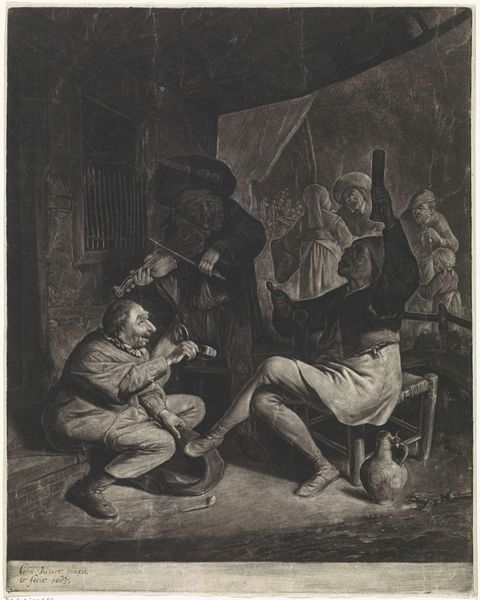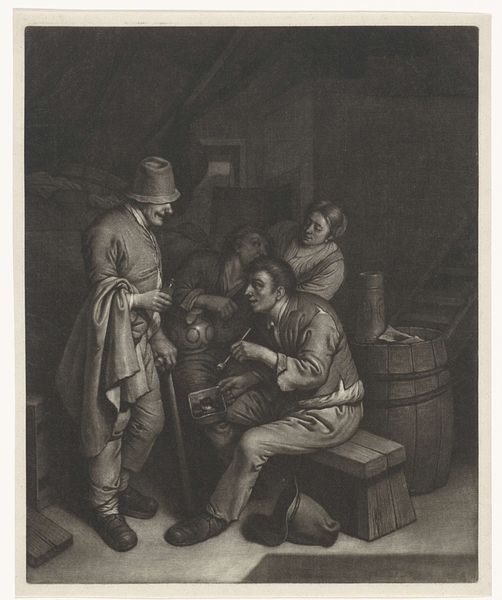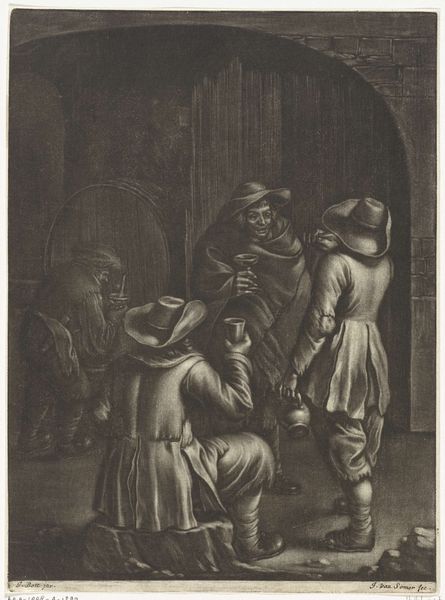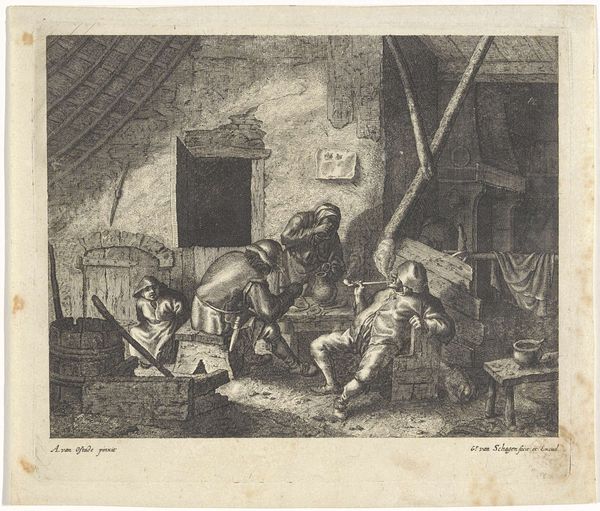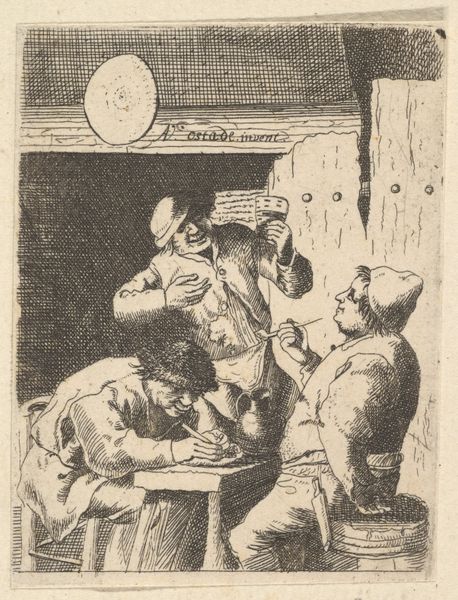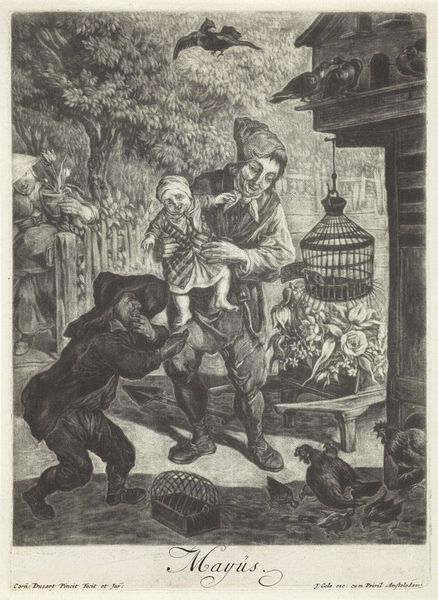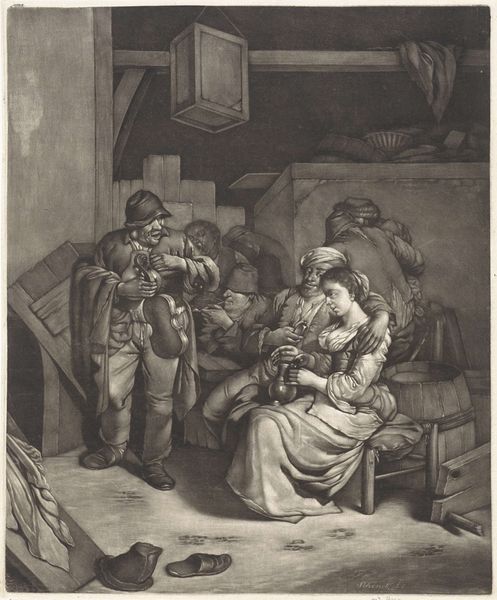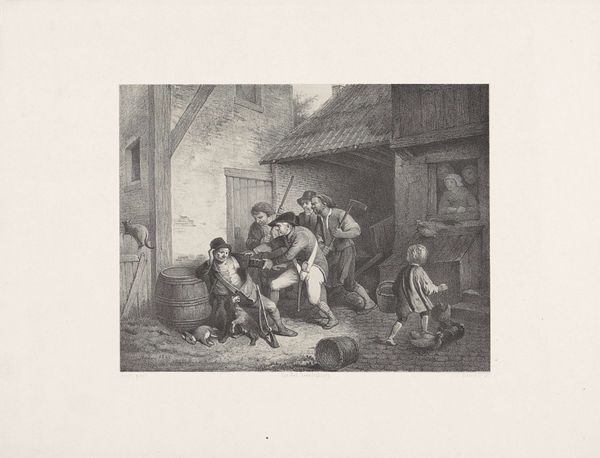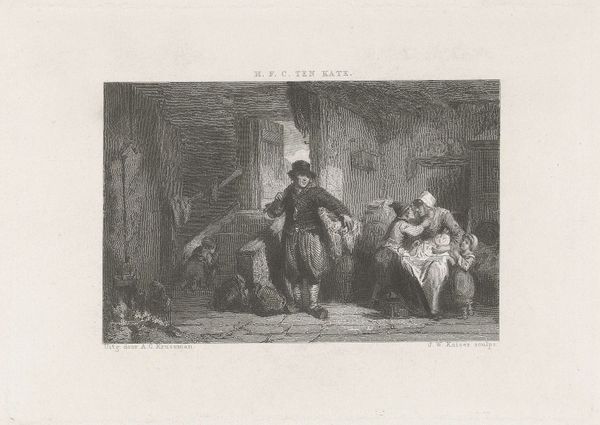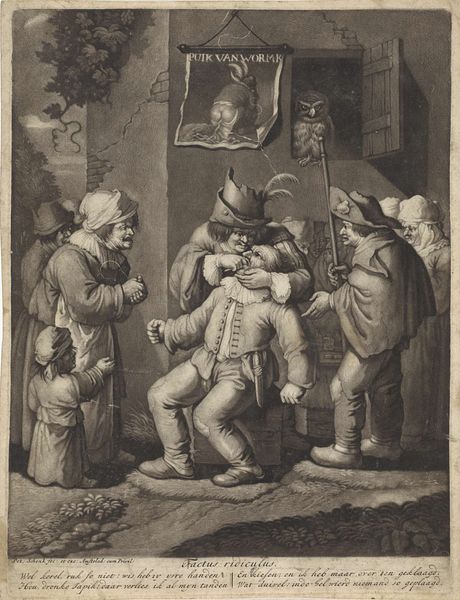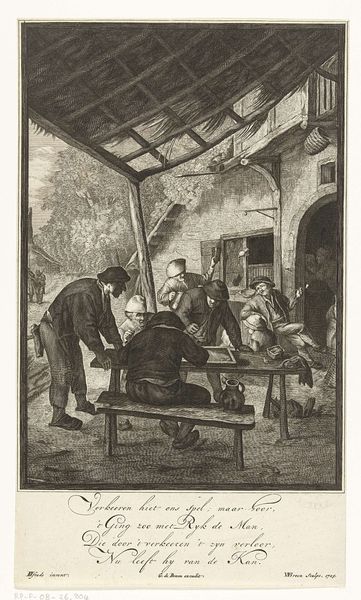
drawing, print, etching, ink
#
portrait
#
drawing
#
narrative-art
#
baroque
# print
#
etching
#
charcoal drawing
#
charcoal art
#
ink
#
pencil drawing
#
portrait drawing
#
genre-painting
Dimensions: height 324 mm, width 259 mm
Copyright: Rijks Museum: Open Domain
Curator: Ah, I find this etching utterly charming! Editor: Charming, perhaps, but the lighting seems…off. A bit too uniformly grey for such a lively scene. Curator: That's the nature of etching, of course. Let’s begin with some context: the piece before us is entitled "Musicerende mannen en een man die tabak aanbiedt"—Musician Men and a Man Offering Tobacco. Cornelis Dusart created it in 1685. It resides here in the Rijksmuseum collection. Editor: Ah yes, typical of Dusart and his cohorts to focus on this kind of genre painting...it really speaks to the growing merchant class enjoying these kinds of recreational scenes. Do you notice how much detail went into etching their clothing and the setting itself? A fascinating peek into their daily lives of leisure and—presumably—wealth. Curator: Absolutely. Notice the labour represented here, though: the man offering tobacco, likely an artisan, literally offers a consumable pleasure. Dusart, I imagine, secured his own living through satisfying the market for just this kind of imagery. I find myself interested in the relationship between the artist's labor and that of his subjects, the relationship between creation and consumption. Editor: I think it’s clear the artist saw the marketplace around him and his potential consumers within. The consumption depicted is more than simply about the offering of tobacco, I think: we also see people consuming music, company and art—there are clear visual hierarchies in play here regarding who has access to these modes of pleasure. Curator: A fair point! And it's even reflected in the use of the etching technique, too. The labor involved in printmaking creates the possibility of distributing and consuming images to an almost industrial degree, creating social impact far beyond a single artwork. It begs the question: who got to own and display pieces such as these, and how did this ownership reflect, in turn, on their own status within this community? Editor: That, precisely, is the art historian’s persistent question: who sees and what does that mean? In this case, it is tempting to ponder, how was the very *act* of depicting everyday life functioning in a burgeoning art market? Curator: It's a tantalizing puzzle, certainly. Examining art within these networks of production helps illuminate how the meaning of art shifts. Editor: Well said, bringing such insight really adds another dimension. Thanks! Curator: A mutual pleasure!
Comments
No comments
Be the first to comment and join the conversation on the ultimate creative platform.
